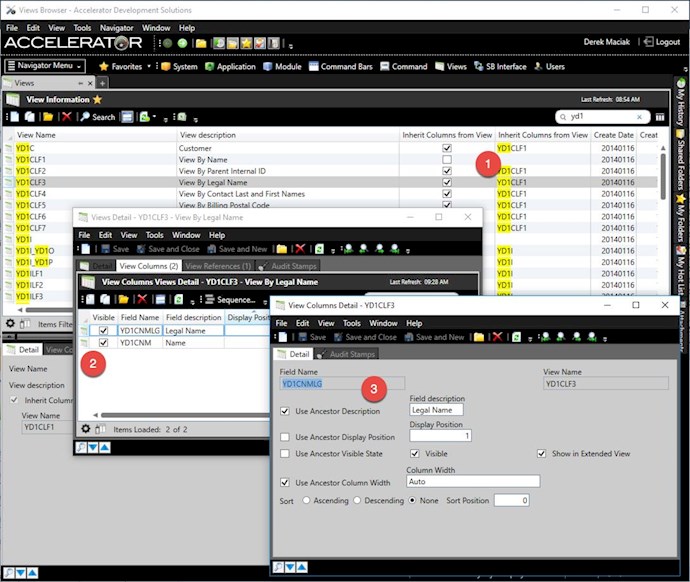In the Accelerator Maintenance, you have the ability to add multiple views to a module based on how the module is used. How the module is used is based on the Standard Base Interface Record. The SB Interface Record allows you to change what view or views are used based on the parent component name (The class object name where the module will be loaded). If the SB Interface record is blank, that indicates that the module is being loaded from the navigator as a main module.
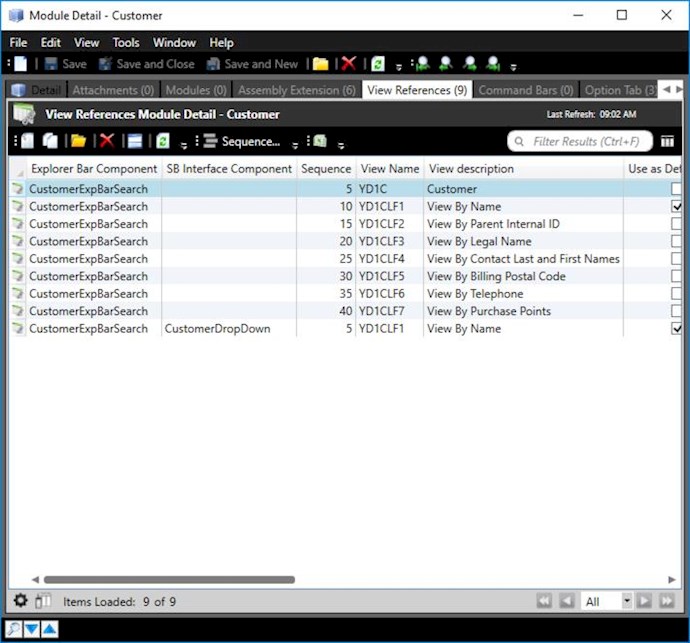
You can specifiy a default view, the number of records to load, and whether or not to show the explorer bar and/or auto load the content window based on the default view. Note: You must have a default view per module location.
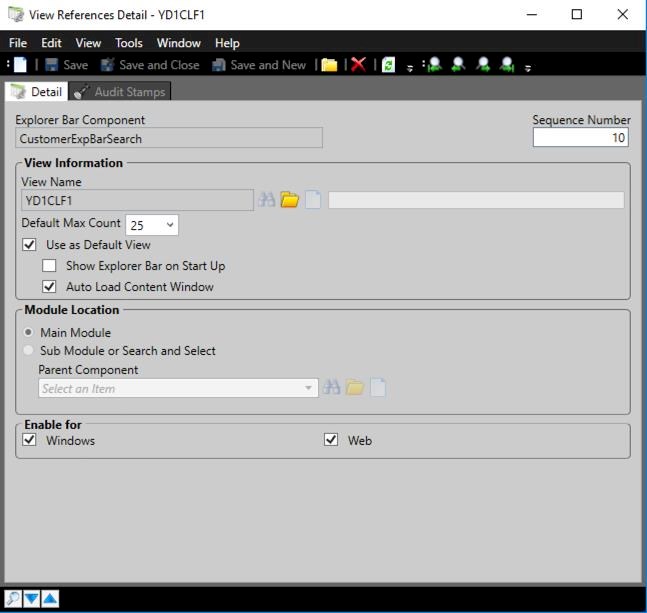
A view can be reused by multiple modules. You will notice that the above detail is a View Reference. The word "Reference" means that you are referening a view and then setting information on how the view will be used per module location.
An Accelerator View allows you to specify what view columns you want the Users to be able to see. You then have the ability to hide/show the columns, set the display position, column width, sort and sort position, and whether you want the column to show in the extended view(Not supported in WPF).
Note: This is setting the default for the view. Each user can overide this based on their individual preferences.
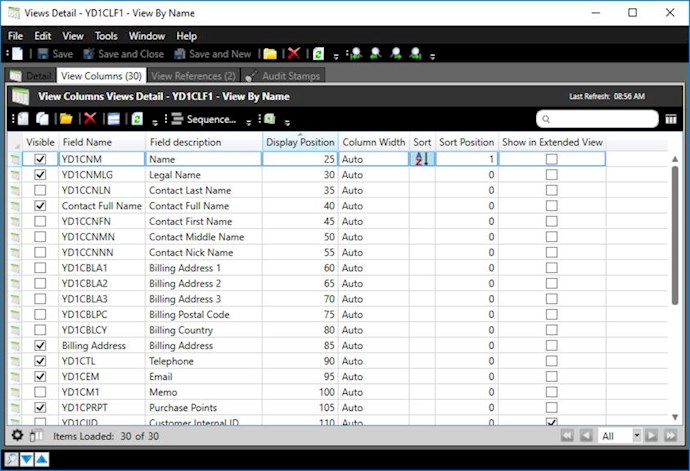
You can specify multiple columns to sort on with the sort position. The Accelerator framework will add an Order By to the query based on this information.
This is what the above Accelerator View looks like at runtime. Notice what columns are shown, the display sequence, column width and sort.
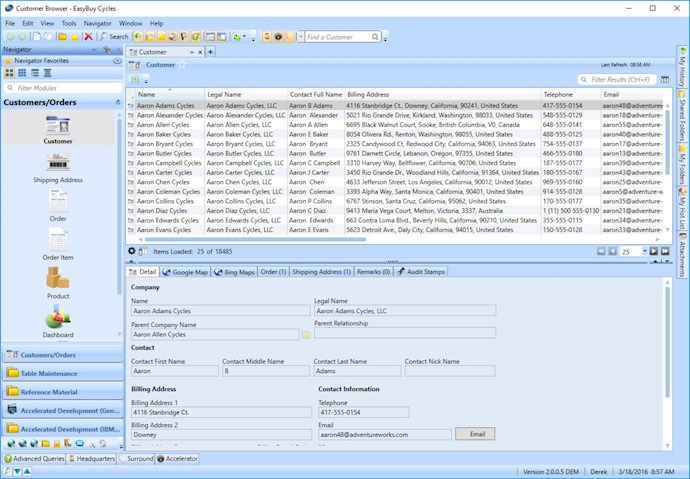
The user can override the view by click on the (1) view settings button located at the bottom of each datagrid. The user can make changes and then click OK. This will save the settings to their profile. The User can reset to the default view settings by (2) clicking the default button.
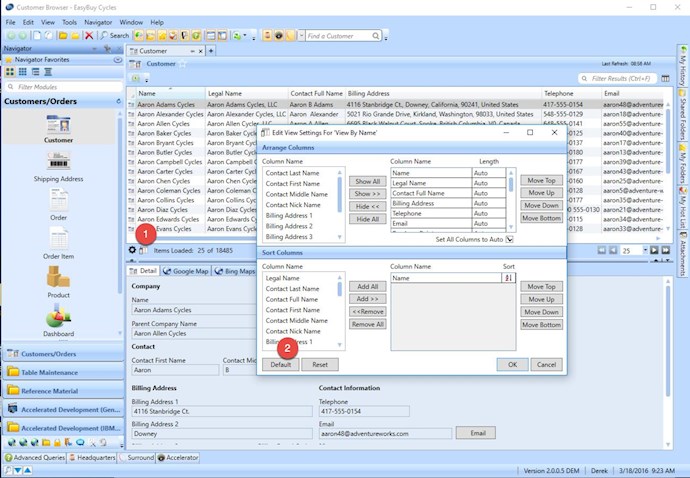
When creating an Accelerator View, you can inherit the view columns from another view and then just specify what you want to be different. This can include adding addition columns that are not on the inherited view. This inheritence will make it much easier for you to create multiple variances of a view.
Here is an example of (1) "View by Legal Name" inheriting "View by Name". (2) The "View by Legal Name" contains 2 columns that are different. (3) The display position and visible state are being overriden.
